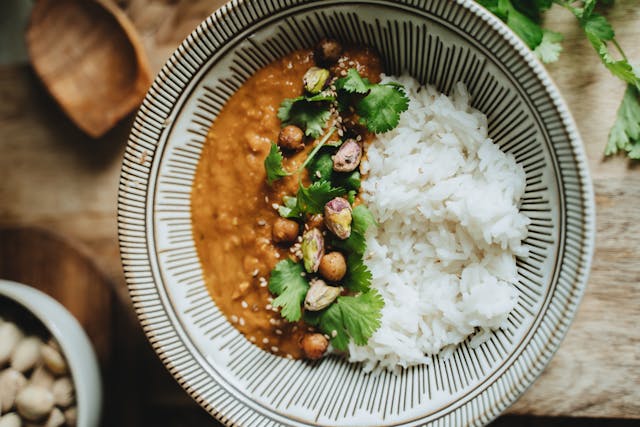Summary
This article walks you through how to eat smart to manage both diabetes and kidney health. We'll explain why high blood sugar can harm your kidneys and lay out the key eating principles that help both conditions, like keeping sodium low, managing carbs, and getting just enough protein. You'll get a full day's worth of meal ideas, from breakfast to dessert, featuring kidney-friendly ingredients such as quinoa, salmon, and zucchini, plus smart snack options. We also include a list of foods to watch out for and practical tips for meal prepping, reading labels, and aligning your lifestyle for better health. If you're dealing with chronic kidney disease, recovering from a transplant, or managing both conditions, this guide will help you make informed, tasty food choices to protect your health long-term.
Dealing with diabetes can feel like a full-time job. When kidney health enters the picture—whether it’s chronic kidney disease (CKD), dialysis, or recovering from a transplant—figuring out what to eat gets even more complicated. The good news is, with a smart approach, you can create delicious and varied meals that protect both your blood sugar and your kidneys.
Why Diabetic and Kidney-Friendly Diets Go Hand-in-Hand
Diabetes is the number one cause of kidney disease. Over time, high blood sugar can damage the tiny blood vessels in your kidneys, making it harder for them to filter waste. The bright side? Making specific changes to your diet can slow down kidney damage and keep your blood sugar stable.
A meal plan that’s good for both diabetes and kidneys focuses on:
- Keeping sodium low to ease the strain on your blood pressure.
- Controlling carbohydrates to prevent blood sugar spikes.
- Limiting phosphorus and potassium, adjusted to your specific kidney stage.
- Eating high-quality protein in moderation to avoid stressing your kidneys.
Daily Meal Structure: Essential Guidelines
Before we jump into meal ideas, here’s a simple way to plan your day.
| Meal | Goals | Recommended Approach |
|---|---|---|
| Breakfast | Stable energy, low sugar impact | High-fiber, protein-rich start |
| Lunch | Satisfying but light on sodium/potassium | Grilled or roasted proteins + non-starchy veggies |
| Dinner | Kidney-safe balance of carbs and protein | Lean proteins, moderate carbs, low-phosphate sides |
| Snacks | Steady blood sugar, no kidney overload | Fruits, whole grains, low-sodium options |
Kidney-Friendly Diabetic Meal Plan: A Sample Day
Let’s walk through a full day of eating designed to support both your diabetes and kidney function.
Breakfast: Cinnamon Quinoa with Blueberries
- ½ cup cooked quinoa
- ½ cup unsweetened almond milk
- ¼ cup fresh blueberries
- A pinch of cinnamon
Mid-Morning Snack: Rice Cakes with Peanut Butter
- 2 plain, unsalted rice cakes
- 1 tablespoon natural peanut butter (check for no added salt)
Lunch: Lemon-Garlic Grilled Chicken Wrap
- 3 oz grilled chicken breast
- 1 low-carb, whole wheat tortilla
- Lettuce, cucumber, and shredded carrots
- 1 tablespoon plain Greek yogurt (instead of mayo)
- Fresh lemon juice and a little garlic for flavor
Afternoon Snack: Apple Slices with String Cheese
- ½ medium apple
- 1 part-skim mozzarella stick
Dinner: Salmon over Herbed Brown Rice with Steamed Zucchini
- 3 oz baked salmon seasoned with dill and lemon
- ½ cup cooked brown rice
- ½ cup steamed zucchini with a drizzle of olive oil
Dessert: Sugar-Free Baked Pear with Cinnamon
- ½ medium pear, halved and baked
- A sprinkle of cinnamon and nutmeg
What to Watch Out For: Limit or Swap These Ingredients
Some common ingredients in a diabetic diet can be risky for kidney health.
| Ingredient | Reason To Limit | Healthier Swap |
|---|---|---|
| Bananas, oranges | High in potassium | Blueberries, apples, pears |
| Tomato products | High in potassium and acid | Roasted red peppers |
| Whole dairy | High phosphorus and potassium | Almond or rice milk |
| Red meat | Harder on kidneys | Chicken, salmon, plant-based proteins |
| Salt & sodium-heavy condiments | Raises blood pressure, strains kidneys | Fresh herbs, lemon juice, garlic |
| Packaged sweets & snacks | High sugar and phosphorus additives | Homemade low-glycemic treats |
Practical Tips for Busy Lives
Even with the best intentions, healthy eating plans can fall apart when life gets hectic. Here’s how to stay on track:
Prep ahead
Cook larger batches of proteins and grains so you can quickly assemble meals later.
Read labels carefully
Sodium and phosphorus often hide in foods that seem healthy.
Stay hydrated, but smart
Water is essential, but if you have advanced kidney disease, your fluid intake might be restricted. Always check with your doctor.
Consult a renal dietitian
They can create a personalized plan based on your specific kidney function and blood sugar needs.
Beyond Nutrition: A Holistic Approach
While food is key, your overall lifestyle matters too. Supporting both your diabetes and kidneys also means:
Moving gently every day
Things like walking, stretching, or yoga can make a big difference.
Managing stress
Stress can unfortunately raise both blood sugar and blood pressure.
Tracking your meals
Using apps or a journal can help you spot patterns and make adjustments.
Sticking to your medication and lab schedule
This is especially important if you’ve had a transplant.
Final Thoughts
When you’re dealing with both diabetes and kidney issues, nutrition becomes a sharper focus—but that doesn’t mean your meals have to be boring. By concentrating on whole, low-impact ingredients and building routines around what truly nourishes your body, you give both your pancreas and kidneys the best chance to thrive.
Your plate isn’t just fuel; it’s a powerful tool for your health, a strategy, and an act of self-care.
